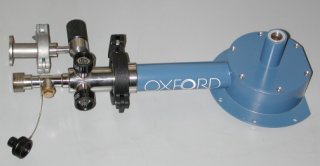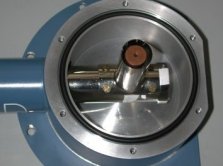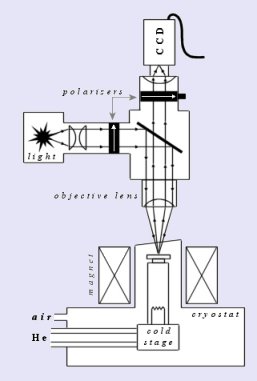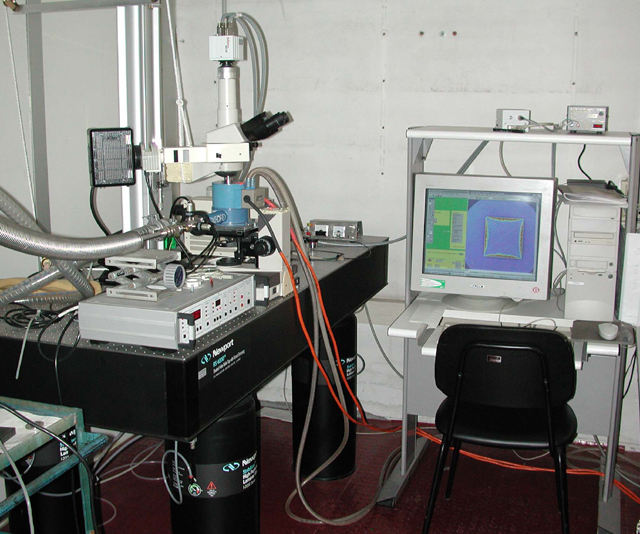Experimental
Setup
|
Our experimental
set-up for magneto-optical (MO) analysis is depicted in the figure
on the left.
The microscope is a custom-modified Optiphot® by Nikon™,
equipped with a Glan-Thompson polariser and a rotating polarisation
analyser (Nikon™). The light beam, from the Hg lamp,
is collimated by a bi-convex lens before passing through a polariser.
After the exciting filter (in the wavelength range centred at 530
nm, in order to obtain the maximum Faraday rotation from the indicator
film), the light hits a beam-splitter and is focused by the objective
lens onto the indicator surface. The indicator film is put over the
superconducting sample inside the cryostat.
|
Generally,
an external
magnet, cooled with water, generates a uniform
magnetic field in the direction perpendicular to the
indicator plane. The
refracted light passes through
the lens, the beam-splitter and the rotating
analyser, before being focalised by the camera
lens and
captured in the CCD matrix of the video-camera.
|
 |
The cryostat (on the left) is a custom design by Oxford™, with continuous
flow of refrigerator liquid; an heater and a temperature controller
allow working in the temperature range from 3.5K to 350K.
|
On
the right there is a zoom view of the cold finger. On the bottom, the
optical picture shows the MO set-up at work.
|
 |

|
|
MO
with Electric Transport Experimental setup
The
MO setup has been improved for magneto-optical and dc electrical transport joined
measurements.
The
new set up includes:
è
DC current generator Keithley Mod. 224
è 2 channel digital voltmeter Keithley
Mod. 2182
A further improvement is in
progress: the
setup will be integrated with an electric transport measurement setup for fast
signal detection.
The
main component for the new experimental set up is the ACQIRIS Mod. DP240 8-bit
Digitizer board, dual-channel (2GSampling/s).

The 8MB total memory, together
with the high frequency bandwidth will allow fast sampling rate and therefore
good timing resolution. The fast sampling rate ensures that all high-frequency
signal components, up to the full bandwidth of the digitizer, are accurately
recorded.
The system will be completed
by high quality electronic components for noise reduction.
Data acquisition will be controlled
by means of Labview custom-developed software, using the original Acqiris drivers,
for full integration and compatibility with the pre-existing magneto-optical
measurements software.
è
Oxford cryostat (custom-design) Temperature operative range: 4 – 350 K
è Oxford electromagnet (custom-design)
Magnetic field up to 0.18 T
è Optiphot Nikon Microscope with a Glan-Taylor
polarizer, rotating analyzer and excitation filter in the wavelength range 525-540
nm
è Keithley Mod. 224 current generator
è Keithley Mod. 2182 nanovoltmeter for
dc measurements



![]()

